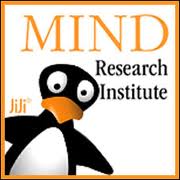ST Math
 Who is JiJi?
Who is JiJi?
JiJi is the beloved penguin in the ST Math software games. Children help JiJi get past obstacles by solving math puzzles – and they associate JiJi with challenge, learning and the thrill of success. Every time a child demonstrates understanding of a math concept, JiJi crosses the screen, signaling success and leading the student to the next more challenging puzzle.
Reimagining Math Education
Spatial-Temporal (ST) Math® is the leader in visual math instruction and represents the highest quality and most effective blended learning math solution in K-12 education.
Created by MIND Research Institute, ST Math is game-based instructional software for K-5 and secondary intervention and is designed to boost math comprehension and proficiency through visual learning. Integrating with classroom instruction, ST Math incorporates the latest research in learning and the brain and promotes mastery-based learning and mathematical understanding. The ST Math software games use interactive, graphically-rich animations that visually represent mathematical concepts to improve conceptual understanding and problem-solving skills.
Whether in the classroom, computer lab or at home, learning never stops with ST Math. When teachers bring ST Math into the classroom, projected onto a screen or interactive whiteboard, the software games help students make connections between the visual representations from ST Math and symbolic representations found in their core instruction. With the touch functionality of ST Math students experience an even greater level of interactivity. With ST Math, learning continues outside of school too, as teachers can assign specific math objectives in the software for homework.
About Our Partner
Mind Research Institute:
A Vision of Success for Every Student
In the early 1990s, three University of California researchers united in a simple yet innovative idea: to teach math the way children learn — visually and experientially. In 1998, they branched off to create an independent non-profit, now known as MIND Research Institute, where they could apply this idea to the development of innovative, visually-based software games. Today, this initial idea continues to drive their work in creating unique and effective learning environments for students and teachers. It also guides their ongoing research investigating key questions about learning, mathematics and how the brain works.

